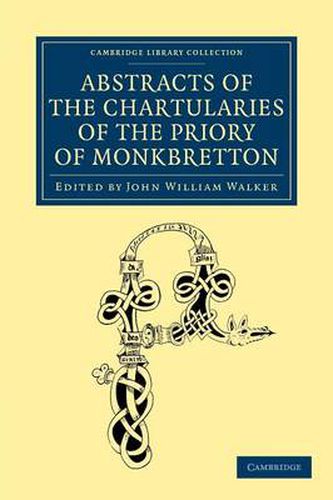Readings Newsletter
Become a Readings Member to make your shopping experience even easier.
Sign in or sign up for free!
You’re not far away from qualifying for FREE standard shipping within Australia
You’ve qualified for FREE standard shipping within Australia
The cart is loading…






The priory of St Mary Magdalene, Monkbretton, was founded around 1154 as a daughter house of Pontefract, and became Benedictine in 1281 following disputes with the Cluniac order. The chartulary, abstracted and published in 1924, is unusually late, written after 1529, shortly before the priory’s dissolution. It comprises 352 folios, arranged by location, with a table of contents. Also included are lists made in 1558 of books belonging to the prior and monks, by then dispersed among several owners. An earlier Latin chartulary exists in the British Library and an English abstract of this forms an appendix to the present volume, along with other items that do not appear in the later document. Although the priory was relatively small, the monks were careful stewards of their property. Most of its possessions were in the near vicinity, and it escaped the first round of dissolutions, with fourteen monks receiving pensions.
$9.00 standard shipping within Australia
FREE standard shipping within Australia for orders over $100.00
Express & International shipping calculated at checkout
The priory of St Mary Magdalene, Monkbretton, was founded around 1154 as a daughter house of Pontefract, and became Benedictine in 1281 following disputes with the Cluniac order. The chartulary, abstracted and published in 1924, is unusually late, written after 1529, shortly before the priory’s dissolution. It comprises 352 folios, arranged by location, with a table of contents. Also included are lists made in 1558 of books belonging to the prior and monks, by then dispersed among several owners. An earlier Latin chartulary exists in the British Library and an English abstract of this forms an appendix to the present volume, along with other items that do not appear in the later document. Although the priory was relatively small, the monks were careful stewards of their property. Most of its possessions were in the near vicinity, and it escaped the first round of dissolutions, with fourteen monks receiving pensions.